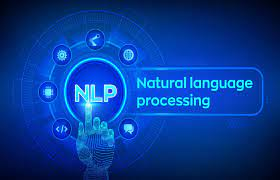Empowering Junior and Senior Student Writing and Reading Comprehension : The Rise of NLP Automated Feedback Applications - Part 1
Artificial intelligence (AI) can be applied to various aspects of junior and senior high school education to enhance the learning experience, personalize instruction, and support student's academic growth. Here are some examples of AI applications in this context:
Adaptive Learning Systems: AI can power adaptive learning platforms that assess students' knowledge and tailor instruction to their individual needs. These systems can analyze students' performance, identify areas of strength and weakness, and provide targeted content and exercises to help them improve.
Intelligent Tutoring Systems: AI can be used to create virtual tutors that provide personalized guidance and support to students. These systems can adapt their teaching style, pace, and content based on individual student responses, providing immediate feedback and assistance.
Natural Language Processing (NLP): NLP techniques enable AI systems to understand and analyze human language. AI-powered NLP applications can help students with reading comprehension, writing, and language learning by providing automated grammar, vocabulary, and writing style feedback.
Automated Grading: AI can streamline the grading process by automatically grading multiple-choice questions, quizzes, and assignments. This saves teachers time and provides students with prompt feedback on their work.
Intelligent Content Creation: AI tools can assist teachers in creating educational materials such as lesson plans, worksheets, and presentations. These tools can recommend appropriate resources, generate visual aids, and even create interactive content to engage students.
Data Analytics and Predictive Modeling: AI can analyze large sets of educational data to identify patterns, trends, and correlations. This information can help educators identify students at risk of falling behind, predict future academic performance, and design targeted interventions to support struggling students.
Virtual Reality (VR) and Augmented Reality (AR): AI-powered VR and AR applications can create immersive educational experiences, allowing students to explore virtual environments, conduct virtual experiments, and interact with digital content more engagingly and interactively.
Personalized Recommendations: AI algorithms can analyze students' learning preferences, past performance, and interests to provide personalized recommendations for further study materials, books, educational resources, and extracurricular activities.
Student Support and Mental Health: AI chatbots can provide students immediate support and resources for common academic and personal challenges. These chatbots can offer guidance on study techniques, time management, and stress reduction strategies, as well as connect students with appropriate support services when needed.
Educational Research and Development: AI can aid in educational research by analyzing large datasets, identifying educational trends, and generating insights to inform curriculum development, teaching methodologies, and educational policy.
It's important to note that while AI can enhance education, it should not replace human teachers. Teachers play a crucial role in guiding and mentoring students, fostering critical thinking, and providing emotional support. AI should be seen as a tool to support and augment the efforts of educators in creating effective learning environments.
AI-powered NLP applications can provide valuable assistance to students in improving their reading comprehension, writing skills, and language learning. Here are some specific ways in which these applications can be utilized:
Automated Feedback: NLP algorithms can analyze students' written work, such as essays or compositions, and provide automatic feedback on grammar, vocabulary, sentence structure, and writing style. These applications can highlight areas of improvement and suggest alternative phrasing or word choices to enhance clarity and coherence.
Language Analysis: NLP tools can help students analyze complex texts and identify the main ideas, supporting details, and underlying themes. By extracting key information and generating summaries or concept maps, these applications aid in developing students' reading comprehension skills and critical thinking abilities.
Vocabulary Expansion: AI-powered language learning platforms can employ NLP techniques to provide students with personalized vocabulary exercises and word recommendations based on their proficiency level and learning goals. These applications can also offer contextual definitions, example sentences, and audio pronunciations to enhance students' understanding and retention of new words.
Language Translation and Transcription: NLP-powered translation applications can assist students in understanding texts written in foreign languages. These tools can provide instant translations of words, phrases, or entire passages, enabling students to comprehend and engage with multilingual content. Additionally, NLP-based transcription applications can convert spoken language into written text, helping students transcribe and understand recorded lectures or audio materials.
Language Practice and Conversation Partners: AI chatbots with NLP capabilities can engage in interactive conversations with students, providing language practice opportunities. These chatbots can simulate realistic conversations, respond to students' questions, correct their mistakes, and offer suggestions for improved language usage. Such applications can be particularly beneficial for language learners who seek additional practice outside the classroom.
Text-to-Speech and Speech-to-Text Conversion: NLP algorithms can power applications that convert written text into spoken words (text-to-speech) and spoken language into written text (speech-to-text). These tools can help students with reading difficulties or language learners who prefer auditory learning. They can also facilitate the transcription of spoken assignments, interviews, or presentations.
Plagiarism Detection: NLP-based plagiarism detection systems can compare students' written work against a vast database of existing texts to identify instances of plagiarism. These applications can highlight potentially plagiarized content, ensuring academic integrity and promoting students' understanding of proper citation and attribution practices.
Language Proficiency Assessment: NLP algorithms can analyze students' language skills and proficiency levels through various assessments. These applications can evaluate grammar, vocabulary, reading comprehension, and writing abilities, providing students with insights into their strengths and areas for improvement.
By leveraging AI and NLP technologies, these applications offer personalized and timely support to students, allowing them to enhance their reading, writing, and language learning skills more effectively. However, it's essential to combine these tools with human guidance and instruction to foster comprehensive language development.









